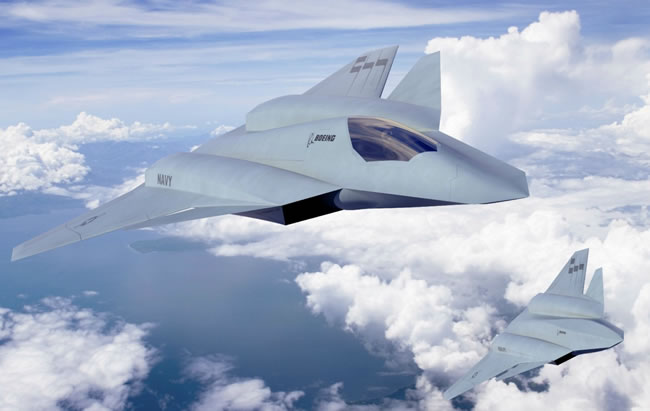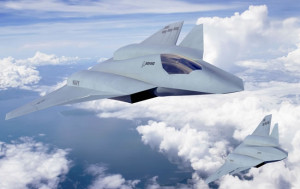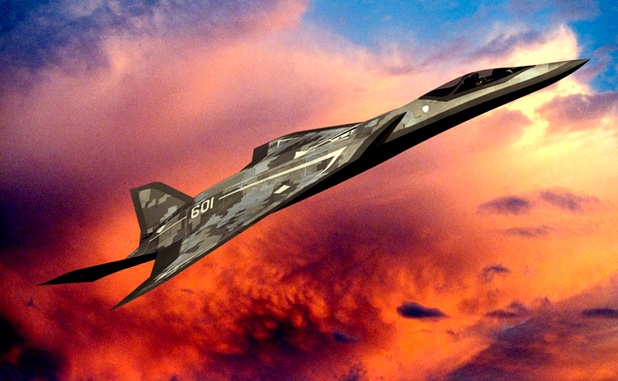

For decades, naval aviation has been the traditional hunting ground for Boeing. Since the U.S. Navy decision to back the F-35C as their future stealth fighter, even before the Fifth Generation fighter took to the air, Boeing has pushed for adopting a ‘Sixth Generation’ solution. This week at the Navy League Sea-Air-Space Exposition in Washington DC, Boeing is unveiling an updated version of its F/A-XX sixth-generation fighter concept, Dave Majumdar reports in his DEW Line blog. Boeing presented this design to the US Navy in response to the US Navy request for concepts for a future ‘F/A-XX’ – an aircraft that will replace the current fighters in the 2030 timeframe, as the Super Hornet and Growler begin reaching their lifespan limit. Through this decade and the 2020s the Navy plans to phase out its ageing Boeing F/A-18A to D-model jets, with Lockheed Martin F-35C. but the Super Hornets are expected to remain in service through the 2030s. With the F/A-XX the Navy is seeking to extend its air defense and strike capability beyond the capabilities currently achieved with the F/A-18 and F-35.
Boeing suggests this next generation multi-role strike fighter could be built in manned or unmanned versions, designed for the anti-access/area denied (A2AD) operational environment. Overall, it is a tail-less, twin-engine stealth fighter. Unlike contemporary stealth designs (B2, F-22, F-35) the Boeing F/A-XX shape features canard wings, which could potentially compromise the aircraft stealth capability. In the case of this tailless aircraft, additional radar reflections from the horizontal canard planes would be offset by elimination of reflections that would be generated by the vertical and horizontal tail planes used in the F-35 and F-22. The Boeing design also features diverterless supersonic inlets reminiscent of those found on the Lockheed Martin F-35 Joint Strike Fighter. According to Majumdar, the lack of vertical tail surfaces suggests the aircraft would be optimized for all-aspect broadband stealth, which would be needed for operations in the most challenging anti-access/area denial environments.
For Lockheed martin, focusing on delivering the F-35 on schedule and cost remains the biggest challenge, but the company is also looking at the future generation, the company also released an artist concept depicting how such ‘next generation fighter’ could look like.

















